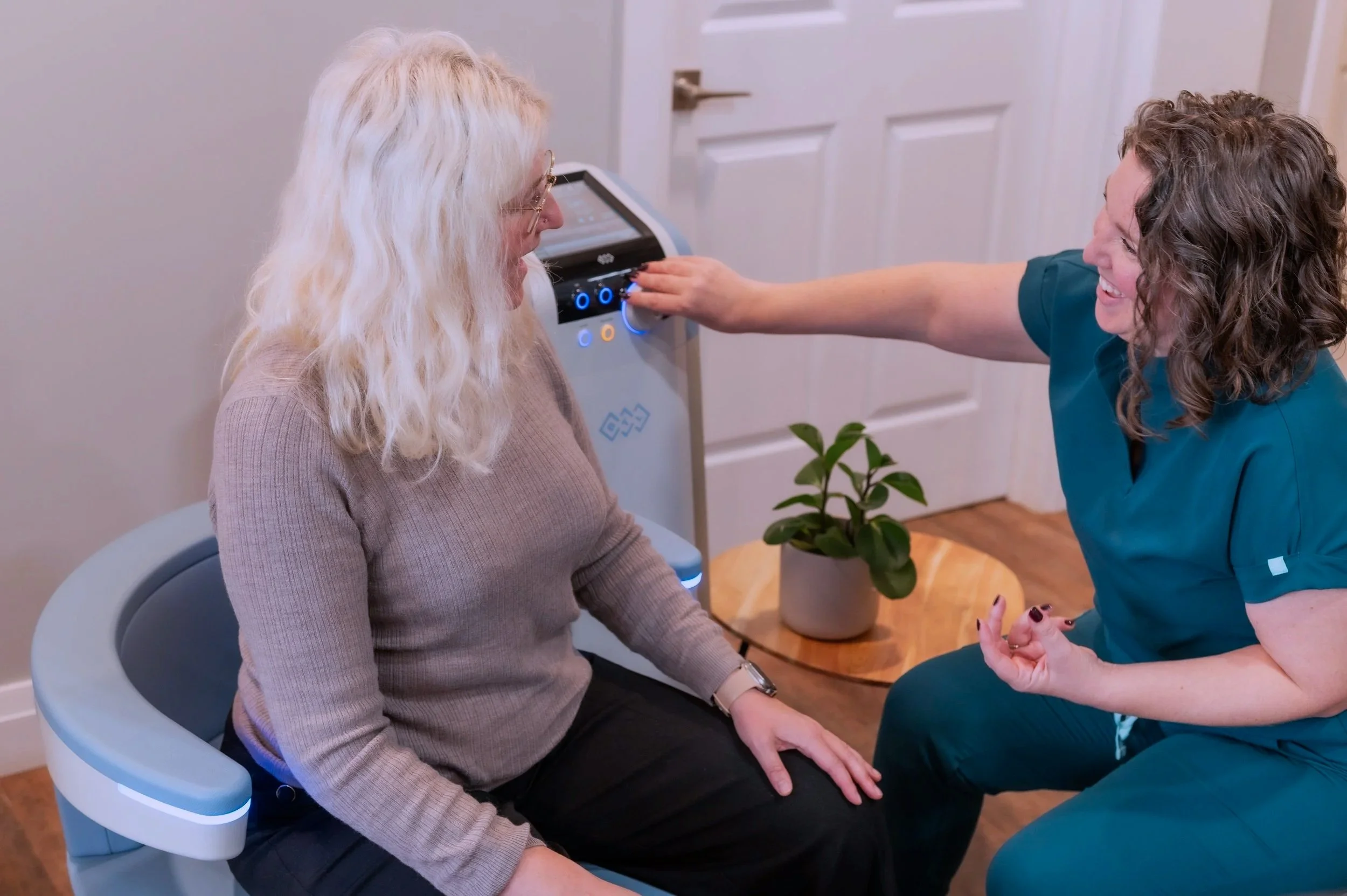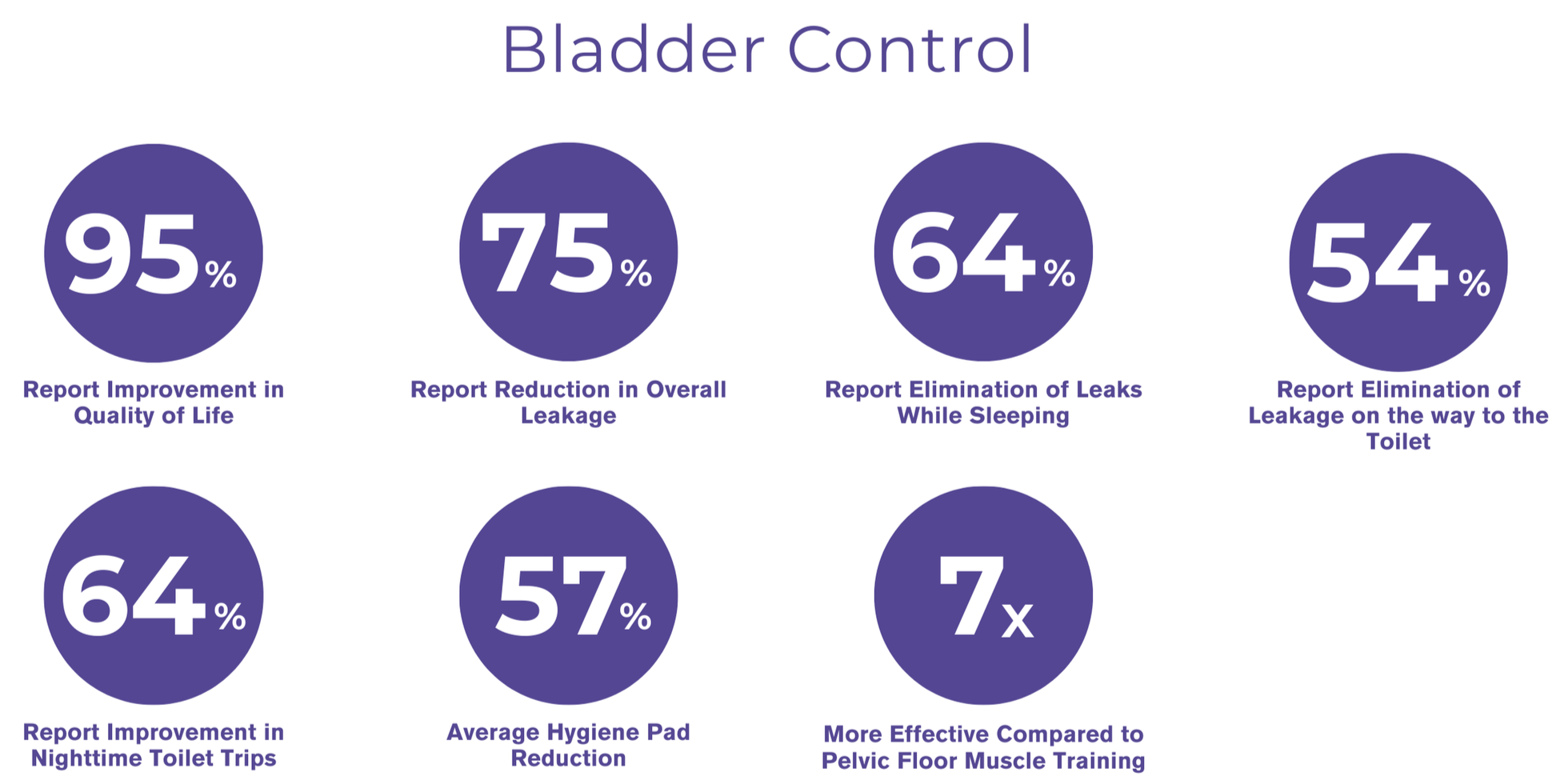
“The treatment itself is quick, painless, and surprisingly comfortable - you just sit fully clothed while the chair does all the work!”
- Muskoka Urology client
How Does Emsella Work?
One session delivers 11,000+ Kegels to the pelvic floor muscles!
The Emsella Chair uses innovative, Health Canada and FDA approved technology. High intensity focused electromagnetic (HIFEM) energy stimulates thousands of supramaximal pelvic floor muscle contractions in a single session. Sitting comfortably, and fully clothed, the entire set of pelvic floor muscles are induced to contract with an intensity and frequency that your body could not achieve on its own. In just 28 minutes, the Emsella Chair delivers 11,200 Kegel-type muscle contractions. And there is no pain! Sit, relax, read a book or watch TV, while effortlessly regaining confidence and control.
-
The pelvic floor muscles act like a “hammock” to support the bladder, uterus, and bowel. A stronger pelvic floor provides better stability and control for these organs, preventing bladder and bowel incontinence, prolapse, and enhancing sexual function.
The pelvic floor can be weakened by aging, pregnancy, childbirth, menopause, prostate cancer treatment, and obesity.
When the pelvic floor is weak it stretches and thins. It loses its ability to properly stabilise the bladder, uterus and bowel. These organs can then drop as they’re no longer supported in their proper position, negatively impacting their functions.
-
A Kegel is a specialized exercise to strengthen the pelvic floor muscles. You can do Kegels, also known as pelvic floor muscle training, to benefit many pelvic-related health issues and they are widely known as the best natural treatment for incontinence.
However, the key to their effectiveness is being able to do copious repetitions of them correctly. This is where the Emsella chair comes into play, effectively doing supramaximal Kegels. Meaning stronger pelvic floor muscle contractions, and more of them, then would be possible to produce through voluntary exercises alone. In fact, the number of Kegels you do in a single 28-minute Emsella session would take you over 30 hours to do on your own!
-
Men and women can suffer from pelvic floor weakness. The Emsella Chair helps anyone looking to restore pelvic floor strength and regain confidence and control.
Emsella treatment is great for women and men of any age who suffer from bladder leaks, frequency, urgency, night waking, bowel incontinence, and sexual dysfunction.
Women who have pelvic organ prolapse are great candidates for Emsella treatment. The Emsella Chair is also good for women who struggle to achieve orgasm, and/or experience dryness.
Men who have undergone pelvic surgery, such as prostatectomy, are great candidates. Emsella treatment is also good for men who have erectile dysfunction caused by compromised blood flow.
Emsella does not treat symptoms caused by tight pelvic floor muscle dysfunction. See our Emsella FAQs for a full list of contraindications.

Clinical Study Results
-
Berenholz J., et al. HIFEM Technology Can Improve Quality of Life of Incontinent Patients
Samuels J., et al. Safety and Efficacy of a Non-Invasive HIFEM Device for Treatment of Urinary Incontinence and Enhancement of Quality of Life
Azparren J., et al. HIFEM Procedure Enhances the Quality of Life in Elderly Men with Post-Prostatectomy Incontinence: A Pilot Study
Guerette N., et al. Randomized Trial of HIFEM Pelvic Floor Stimulation Device Compared with Pelvic Floor Exercises for Treatment of Urinary Incontinence
Brandeis J., et al. Improving Male Pelvic Health: Efficacy of HIFEM Muscle Stimulation for Urinary Function and Sexual Dysfunction in Men
Evans K., et al. Prospective Multi-Center Study on Long-term Effectiveness of HIFEM Procedure for Treatment for Urinary Incontinence and Female Sexual Dysfunction
Hlavinka T., et al. The Use of HIFEM Technology in the Treatment of Pelvic Floor Muscles as a Cause of Female Sexual Dysfunction: A Multi-Center Pilot Study
Singhal D., et al. HIFEM Procedure for Treatment of Persistent Urinary Incontinence Post-Pelvic Organ Prolapse and Anti-Incontinence Surgery



